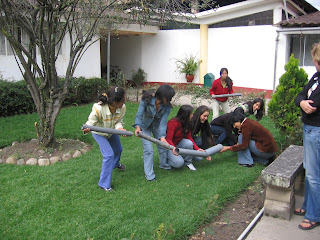
by Alisha & Micah
Today is our last day in Chota. We'll travel to Cajamarca tomorrow morning and take a night bus from there to Lima, where we'll spend a few days doing final paperwork and exit interviews before flying back to the States on July 22. It is hard to believe that our two-year Peace Corps service is coming to an end. When we arrived in Peru on June 6, 2008, we really didn't know what we were getting ourselves into. We were filled with anticipation to find out where our site would be, what kind of work we would do, and what our host family and our community would be like. More than two years later, we can look back and see the life we built here for ourselves. Working with Peruvian youth and their families has been has fun, frustrating, challenging, eye-opening, and educational. When we reflect on the work we've done, it's difficult to know how much progress or change we've made in our site. We certainly felt like we were banging our heads against a wall a lot of the time. However, the balance of our work experience has been very positive.
The opportunity to come to know Peru in the way we have come to know it is one of the best components of our experience in the Peace Corps. Working with local agencies, living with a host family, traveling throughout the country, and attempting to develop solutions to problems that people face here every day has given us a profound understanding of this beautiful country's human and physical geography. Not many people develop that sense of understanding about their own countries, let alone a foreign one, and we're both aware of the good fortune we've had in this regard.
We would like to thank all of those who have followed along with us through this blog. It's difficult to distill our experiences into semi-regular missives like these, but we hope that you have enjoyed reading about our experiences. We certainly have enjoyed recording them here.
To anyone who is reading this blog and is considering going abroad, whether to work as a Peace Corps volunteer or a volunteer or employee of some other organization, or to study, or to travel and experience a new place, we hope that our journey will help to convince you to do so. You'll have good and bad experiences, but, ultimately, you'll be better for having made the effort to understand people who are different from you.






















































